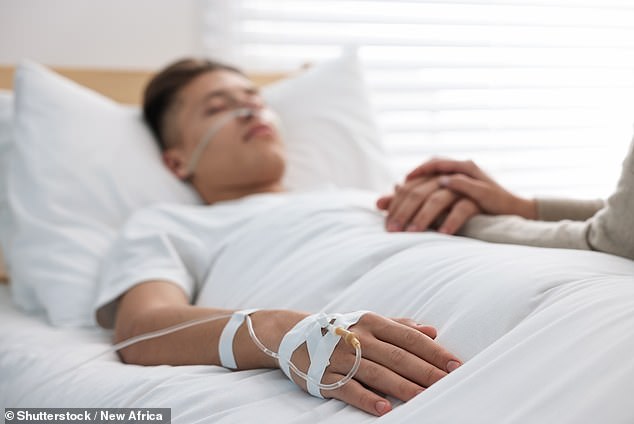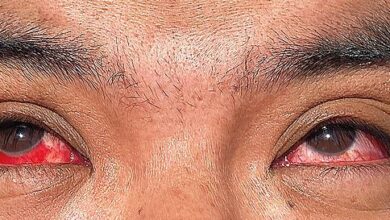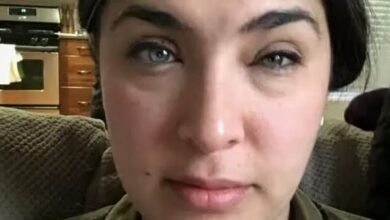Researchers studying people in vegetative state make shocking discovery that could redefine consciousness







A large international study shows that patients who do not respond may still be conscious enough to perform ‘cognitive tests’.
Researchers in the US, UK and Europe performed MRIs and other brain scans on more than 200 people with severe brain injuries that left them in a coma or vegetative state.
The team asked them to imagine different scenarios, such as ‘opening and closing your hand’, to measure brain activity and responses.
They found that one in four participants followed this instruction repeatedly, suggesting that patients who are largely unaware of what is happening around them may still be able to understand language, pay attention, and perform simple tasks.
The findings raise ethical questions about stopping ventilation or removing their organs too early, the researchers said.

Researchers in four countries found that one in four patients deemed ‘unresponsive’ were able to follow basic instructions, based on brain scans

The researchers said the findings could prevent patients from being taken off ventilators too early, while they still show signs of consciousness.
Dr. Yelena Bodien, lead author of the study and a researcher at Massachusetts General Hospital, said: ‘Some patients with severe brain injuries seem unable to process the outside world.
‘However, when we assess them with advanced techniques such as task-based fMRI and EEG, we can detect brain activity that suggests otherwise.
“These results raise critical ethical, clinical, and scientific questions. For example, how can we harness that invisible cognitive capacity to establish a communication system and promote further recovery?”
The study, published Wednesday in the journal, New England Journal of Medicineincluded 241 participants from six different locations in the US, UK, Belgium and France.
All of these patients were adults who had suffered some form of brain injury resulting in a coma, vegetative state, or minimally conscious state, where a person generally has limited signs of consciousness and responses to stimulation.
Most suffered unspecified “brain trauma” – for example, traumatic brain injury – followed by cardiac arrest and stroke.
The patients were on average 38 years old when they were injured, and 64 percent were male.
All participants underwent electroencephalograms (EEGs) and MRI scans to measure electrical activity and overall brain function. Data was collected for 17 years.
Based on the scans, the team found that 25 percent of participants could respond to instructions such as “imagine opening and closing your hand,” followed by “stop imagining opening and closing your hand.”
This is up to 10 percent more than previous estimates, indicating that more patients are still conscious than previously thought.
This phenomenon is called cognitive motor dissociation (CMD) and occurs when patients appear unresponsive, but there is still brain activity, such as memories.


Actress Mamie Laverock spent weeks on life support after surviving a fall from a five-story building. Despite the odds, she survived and took her first steps (right) after being taken off life support


Four-year-old Maisie was taken off life support in March, just two days after being admitted to hospital with flu-like symptoms. It is unclear whether she was aware of this or whether her chances of survival would have been greater if she had been on life support longer.
The experts noted that these findings could help redefine consciousness and prevent patients from being taken off ventilators or having their organs removed when they have a chance to improve.
Several patients have benefited from longer periods of support. Hallmark actress Mamie Laverock, for example, was placed on a ventilator in May after falling from a fifth-floor balcony.
She remained on a ventilator for several weeks and eventually woke up, taking her first steps three months after the injury.
Other patients were taken off support quickly, making it difficult to know whether they would ultimately survive if they remained on support. One poignant case was that of four-year-old Maisie, a toddler from Ohio who developed flu-like symptoms in March.
The toddler suffered a stroke and severe swelling in her brain. Two days after arriving at the hospital, her ventilator was stopped.
“If cognitive motor dissociation goes undetected, it can have serious consequences, including premature withdrawal of ventilation, missed signs of consciousness, and lack of intensive rehabilitation,” said Dr. Bodien.
Furthermore, the findings could encourage doctors to pay more attention to subtle signs of awareness in their patients, or to enrich them by, for example, playing music or talking to them. This could speed up their recovery.
Dr. Nicholas Schiff, lead author of the study and a neuroscientist at Weill Cornell Medicine in New York City, said: ‘We found that this kind of sharp dissociation of preserved cognitive abilities, without any behavioral evidence, is not uncommon.
“I think we now have an ethical obligation to connect with these patients and help them connect to the world.”
However, the study had some limitations, the most significant being that each institution had different procedures for testing patients, which may have biased the data.
The study also used a small sample size.
The team plans to conduct additional research to fully determine how conscious patients are in these states.
“We know that cognitive motor dissociation is not uncommon, but resources and infrastructure are needed to optimize detection of this condition and provide patients and their families with the appropriate support,” said Dr. Bodien.




